Gorgeous day out. 80°F with a light breeze. 
I haven’t been to Arcadia Lake in a while because of ticks. Yesterday I couldn’t resist because we got 3″ of rain this week and I had been seeing fungi everywhere! Plus 80°F for a high temperature in August? in Oklahoma? I wasn’t disappointed with the amount of fungi I found, but I only had an hour to spend in the woods. Apparently that is long enough for Roxy to be covered in seed ticks… No more hikes out there for her until fall. She is one miserable pup today.
My first find was not a fungus. This box turtle thinks I can’t see it, and it couldn’t resist looking to see if I was still there every 2 seconds.
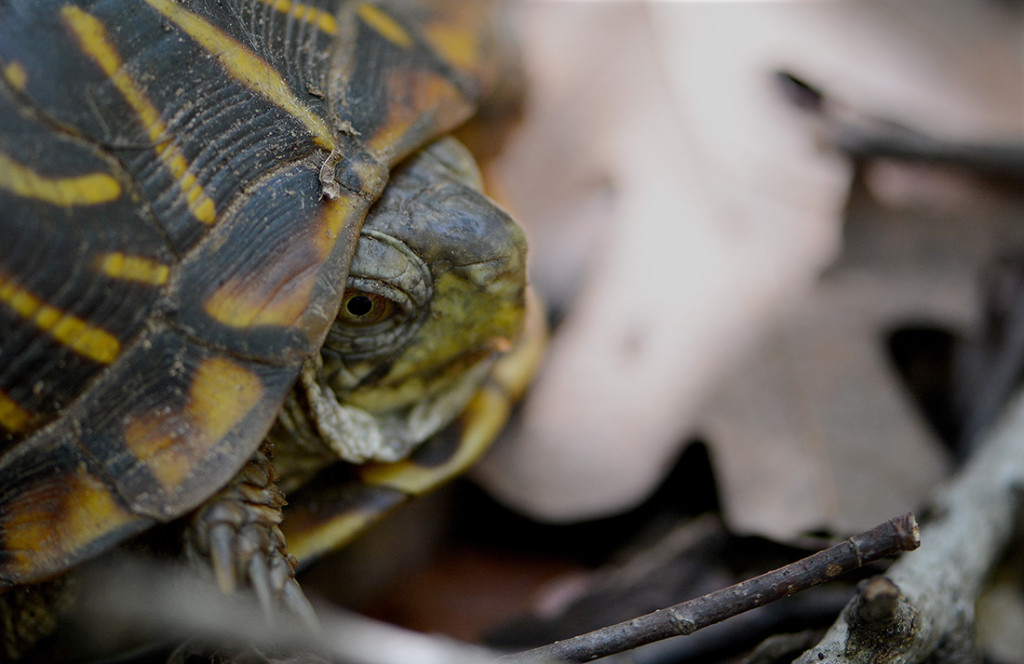
Right behind this little turtle was an orange bolete. I saw a few of these around. It’s interesting how rough this reticulated stalk is.
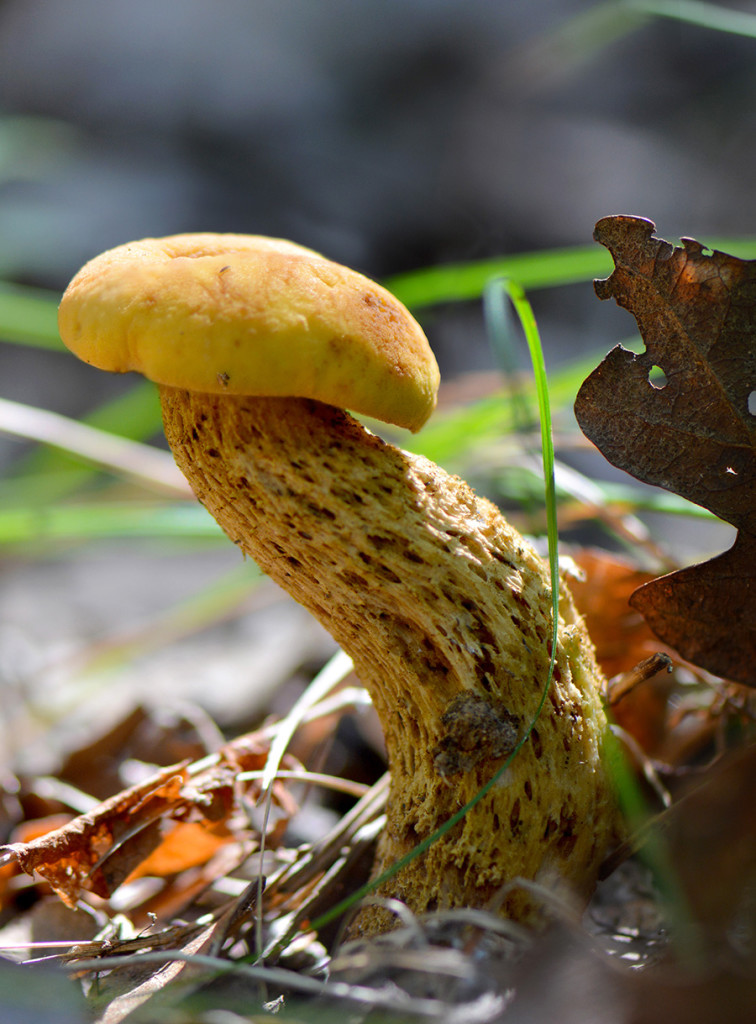
This patch of jelly ear is eye level and higher, growing on what looks like either a poison ivy or Virginia creeper vine (I couldn’t see any leaves). I’ve never seen anything grow on this vine before, so I’m guessing it’s dead.
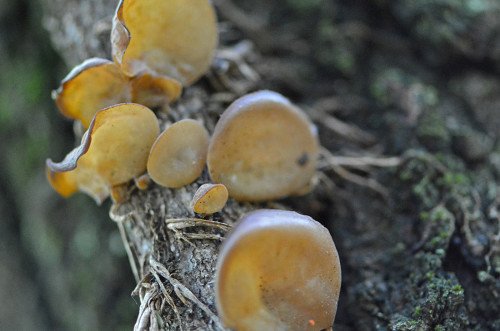
Pretty little orange gilled mushroom looks fuzzy or velvety with its little hairs.
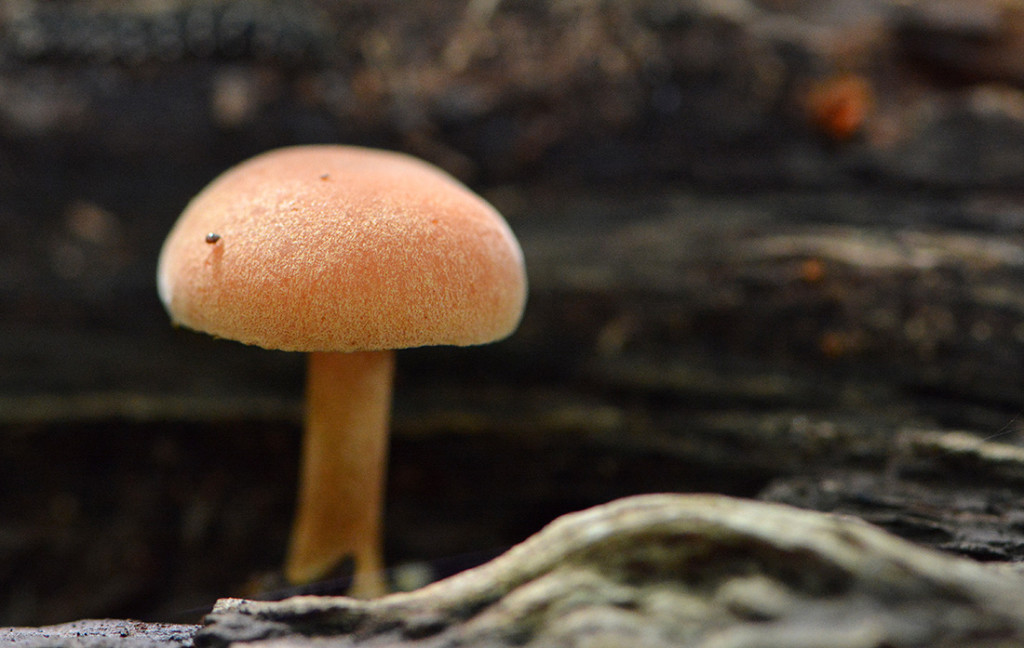
I believe this mushroom is the same type as the fuzzy one above, but it doesn’t look fuzzy.
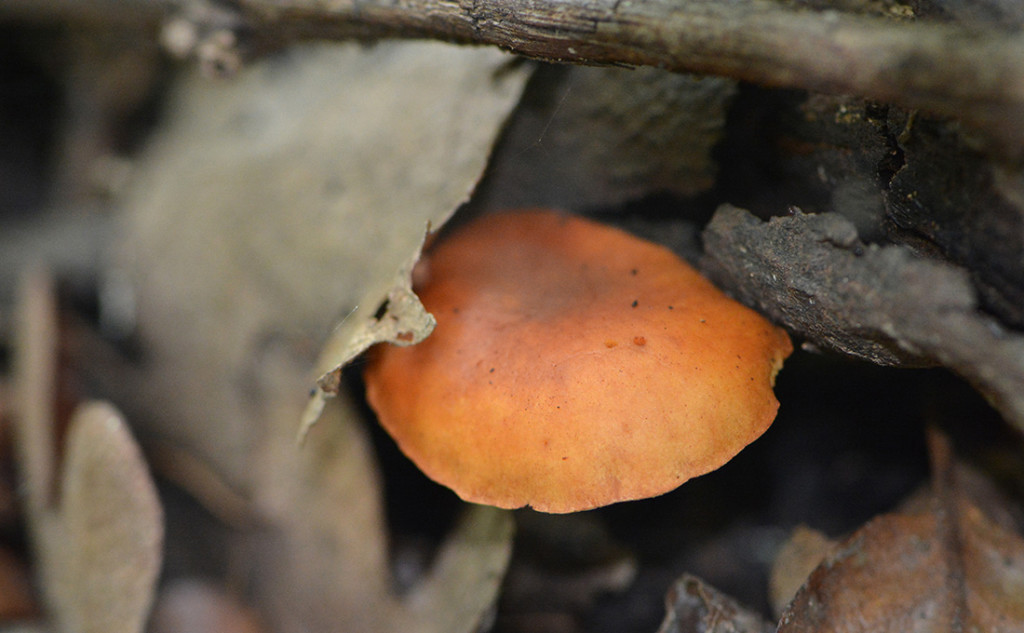
Notice how the gills are spaced fairly far apart and are free of the stalk – meaning they are not attached to the stalk.
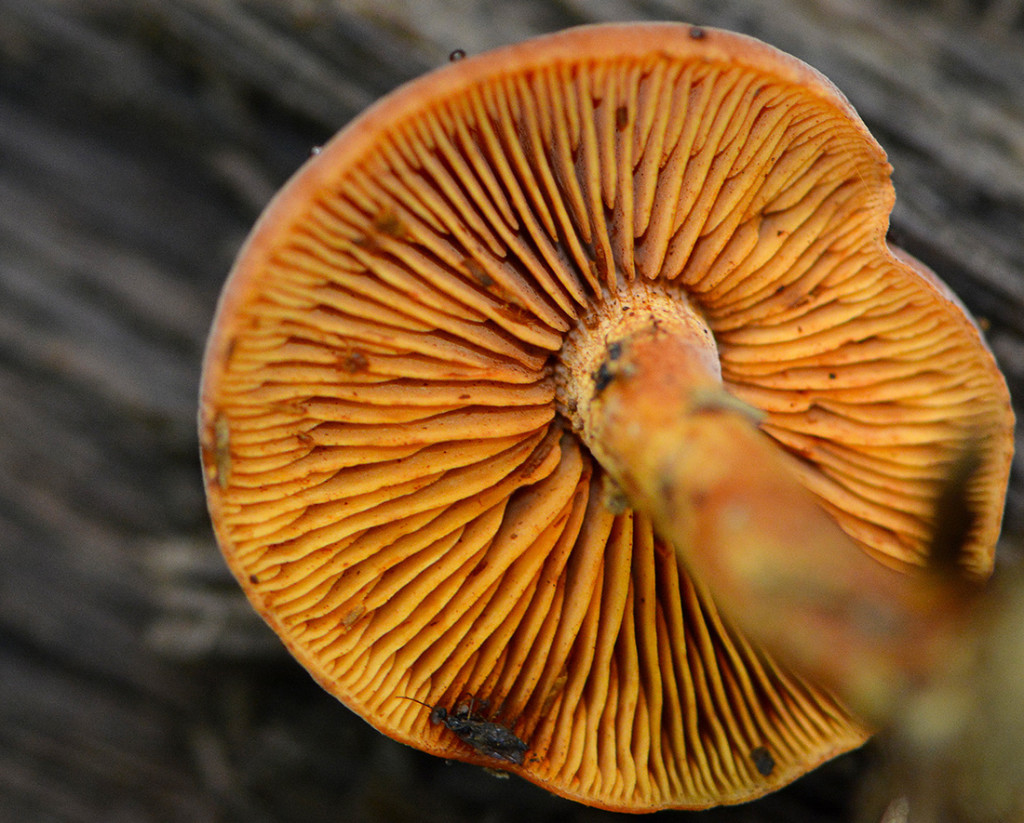
The underside of a group of polypores. These have no gills or tubes.
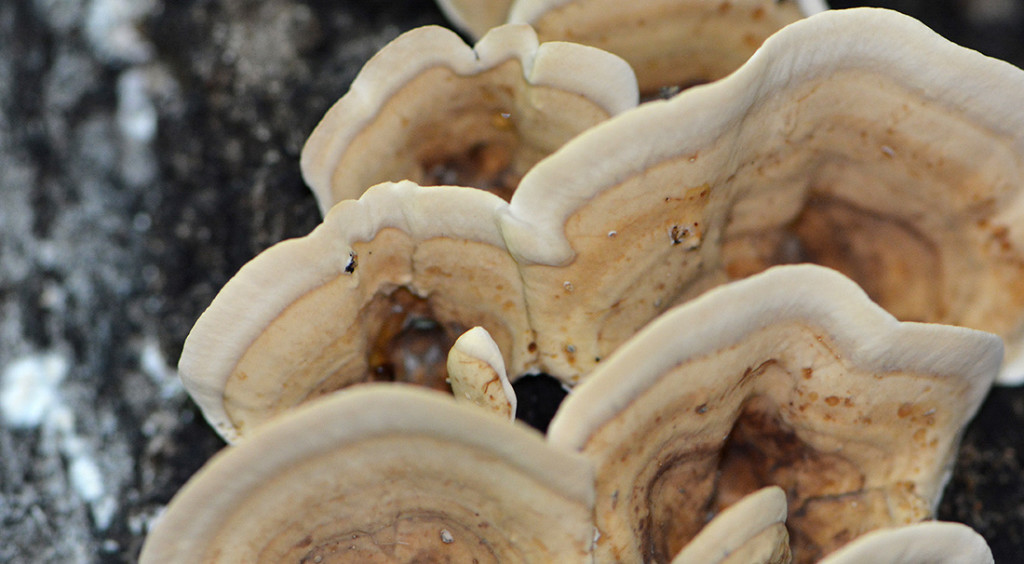
A perfect bright white mushroom with striated margins, which make the outer edges look fancy.
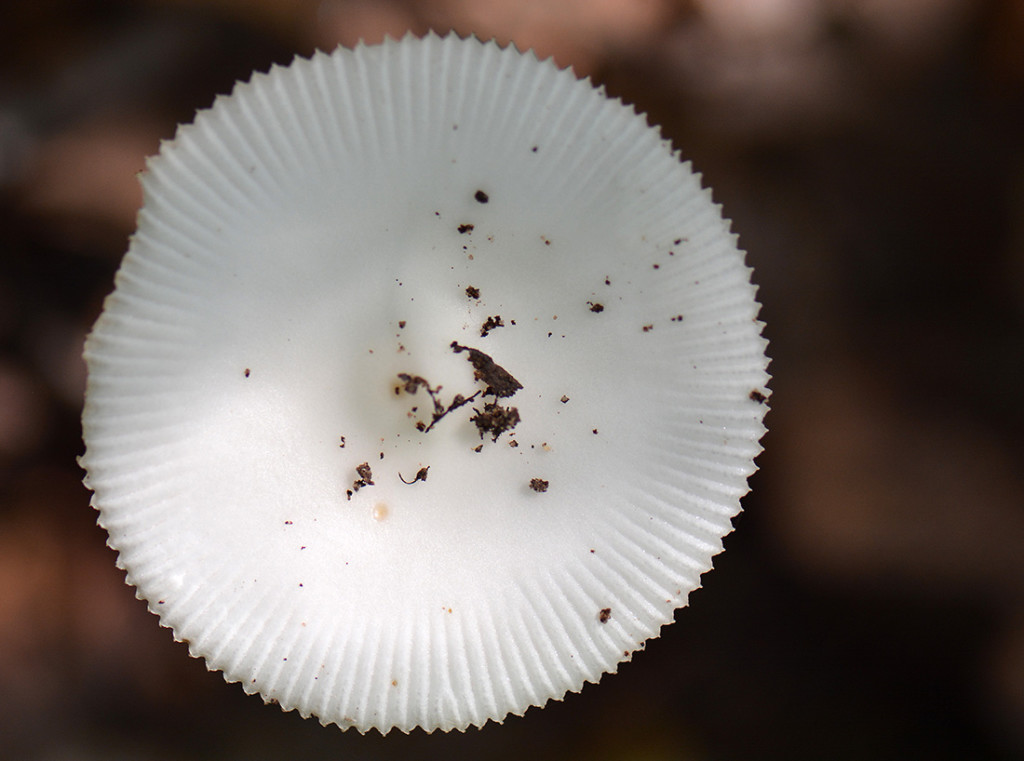
A different type of white mushroom than the one above, the one below has warts on the top and is larger and thicker overall. The photo below shows what this mushroom looks like after the egg phase, but before it fully grows and opens. You can see the warts on the side and top – these will be more apparent as the mushroom grows larger. Warts are remnants of a universal veil that enclosed the entire mushroom when it was immature.
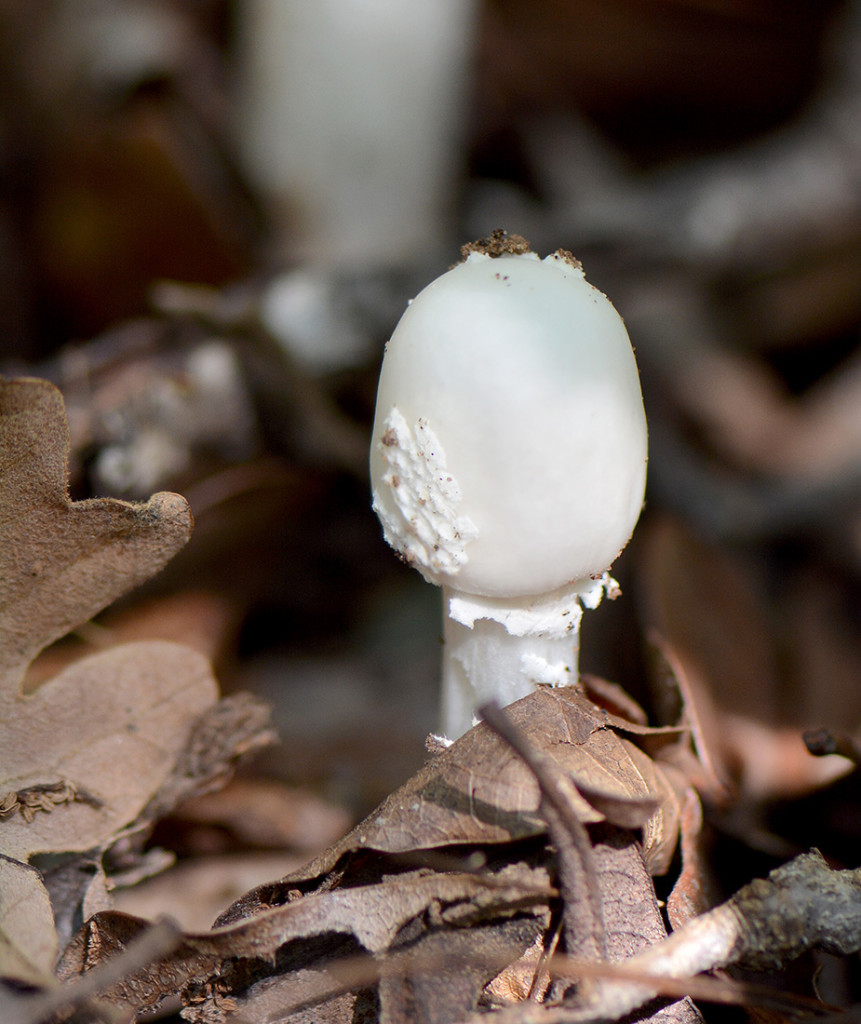
Here is a mature version of the above mushroom, with a few friends – a small black beetle, a tiny snail and some gnats.
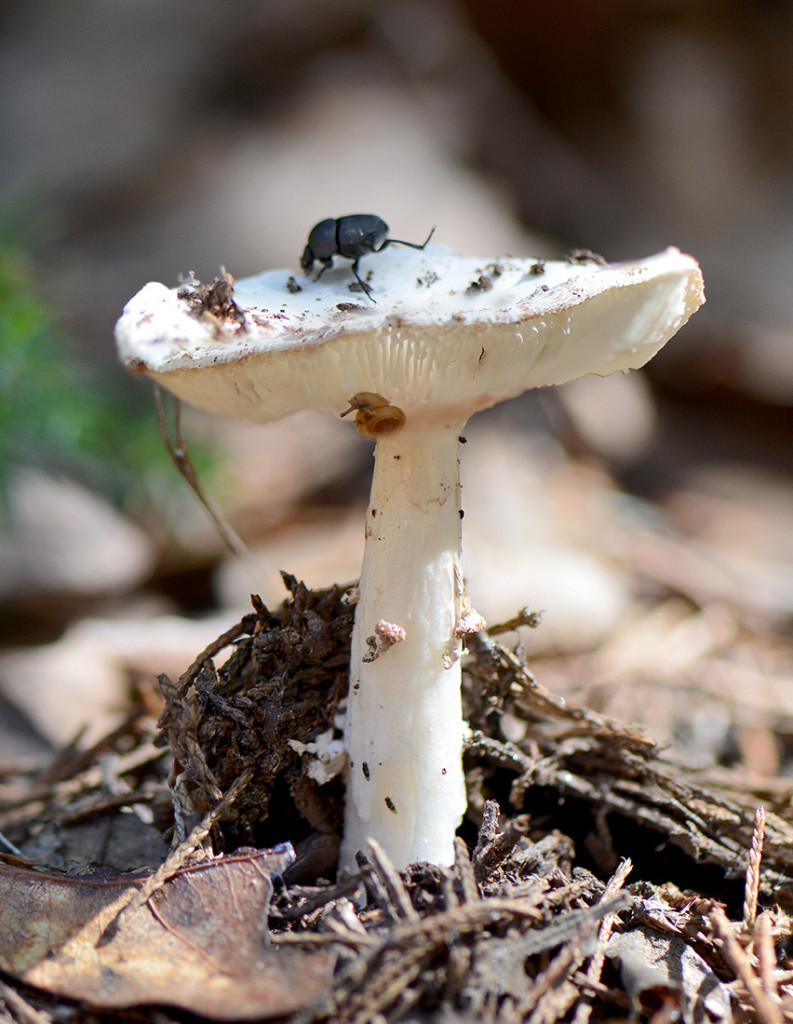
A closeup of the beetle also shows the mushroom’s warts (along with some dirt), which are now dried and separated slightly from the top of the mushroom.
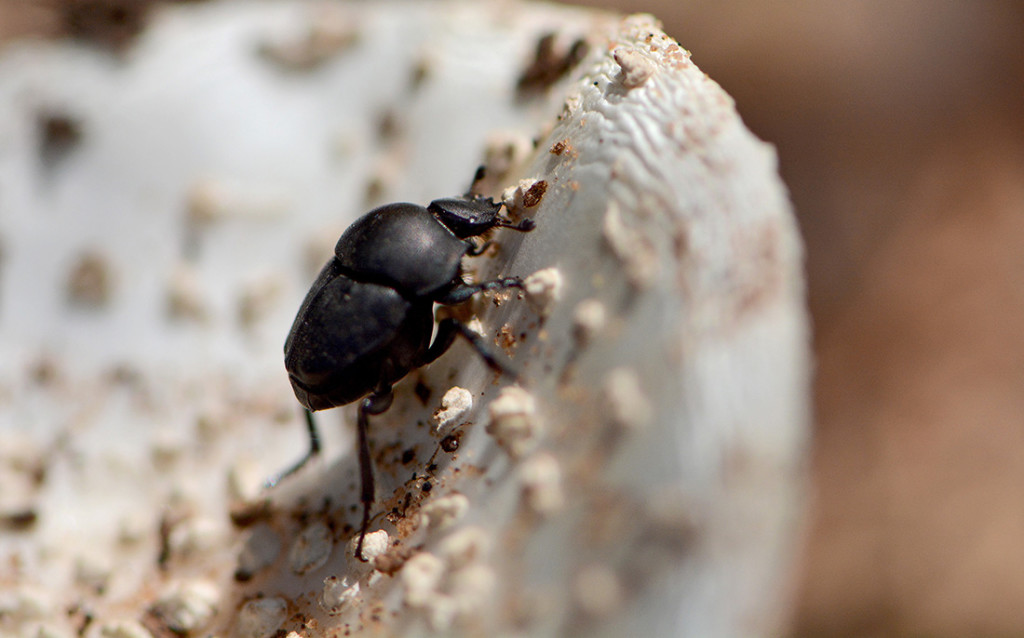
I didn’t want to completely ignore the wildflowers today. This was a gorgeous prairie ironweed about 3′ tall.
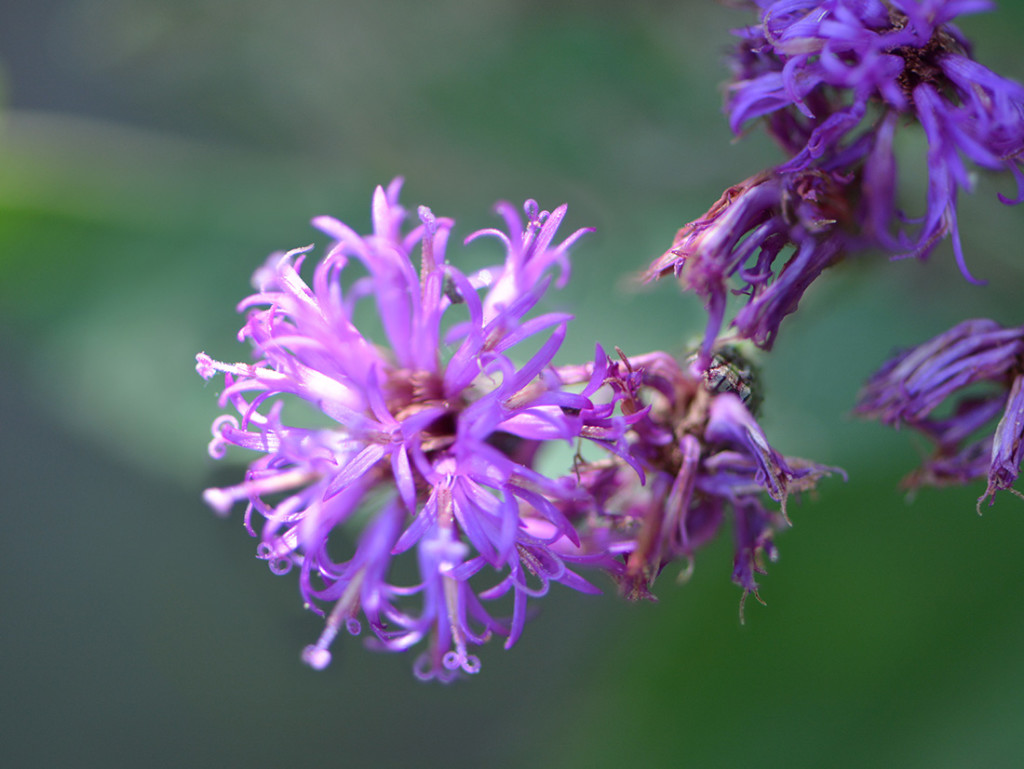
Cinnabar Polypore upper surface finely hairy to suedelike.

This shows a closeup of the underside of the cinnabar polypore. Small pores that turn into tubes instead of gills.
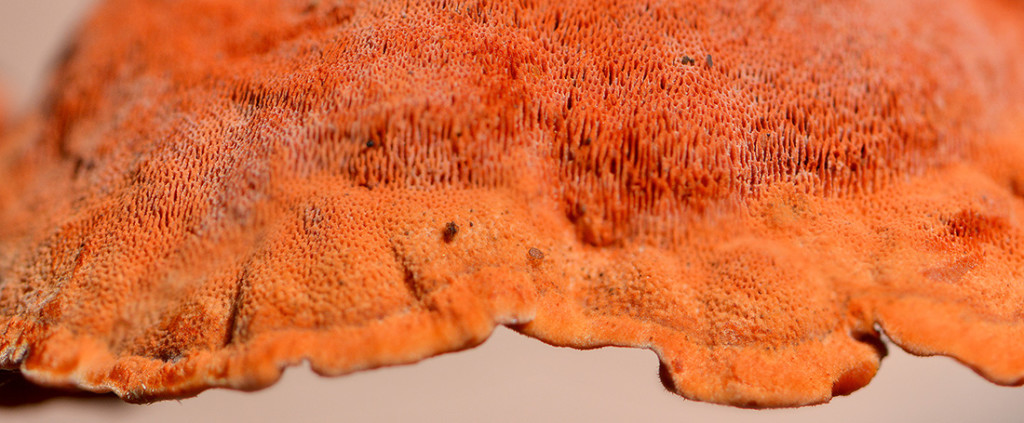
Tiny little candle-snuff fungus, and I mean tiny. It’s only about 1/8 – 1/4″ tall if that. First time I’ve seen one of these. But then, it was so small I probably overlooked it many times before.
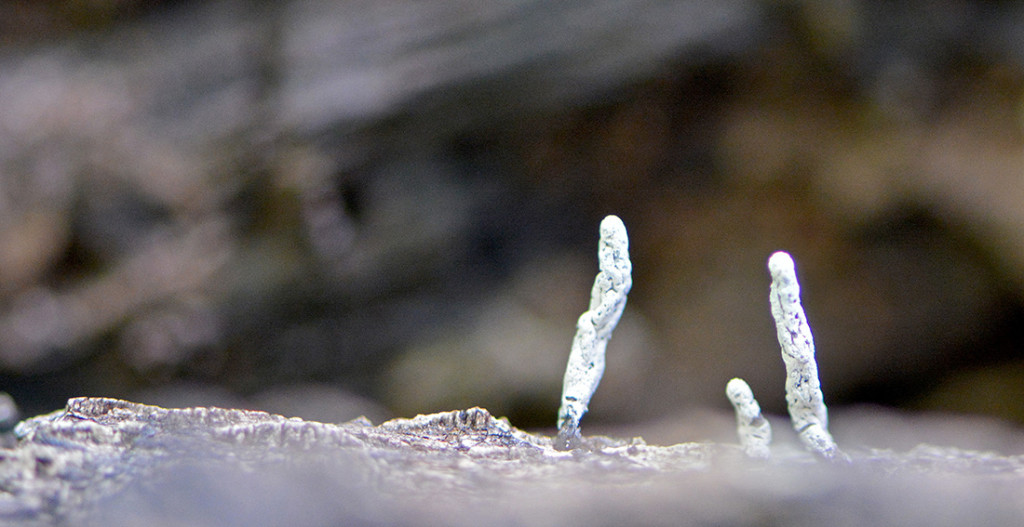
The earthstar is one of my favorites! This one was fairly large compared to others I’ve seen in Oklahoma. It was growing under a huge Juniper.
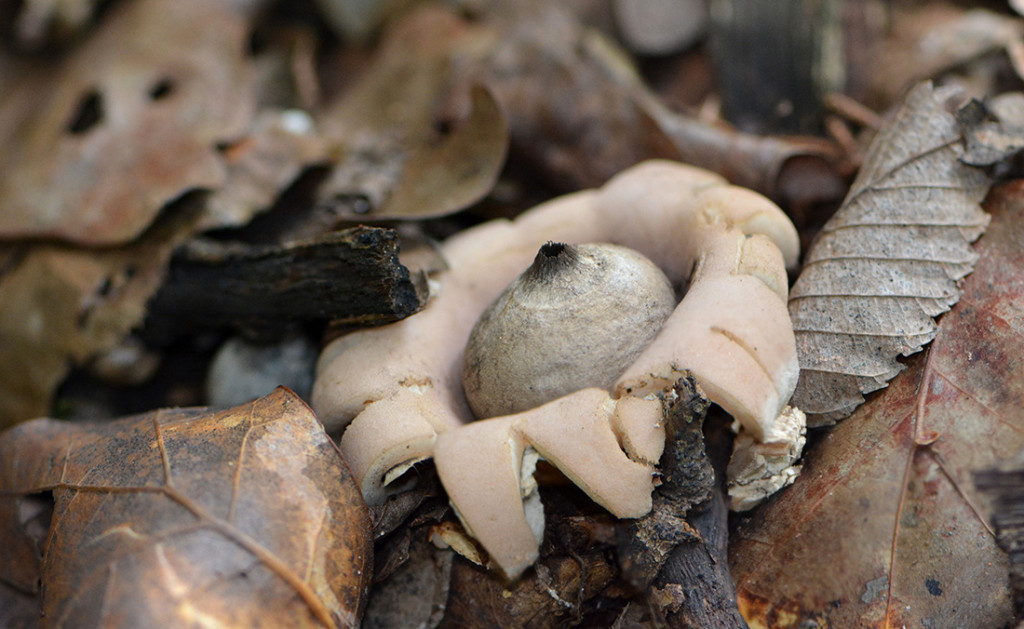

Very cool! Thank you for the update. I hope Roxy is feeling better soon!
Roxy is back to normal! Thanks Kelly!
Glad your boss gave you the day off, wish it had been a better day for Roxy. What causes the cinnabar to have its color?
I have no idea what makes them so vibrantly colored Jimmy. I looked it up and couldn’t find anything on it. Great question though, it’s such a beautiful polypore. I feel lucky to have seen it two years in a row on the same fallen tree. Thanks!
Great post!
As usual I’m blown away by your observations. You even have me looking for fungi at the farm. And as always, I love the wildflowers.